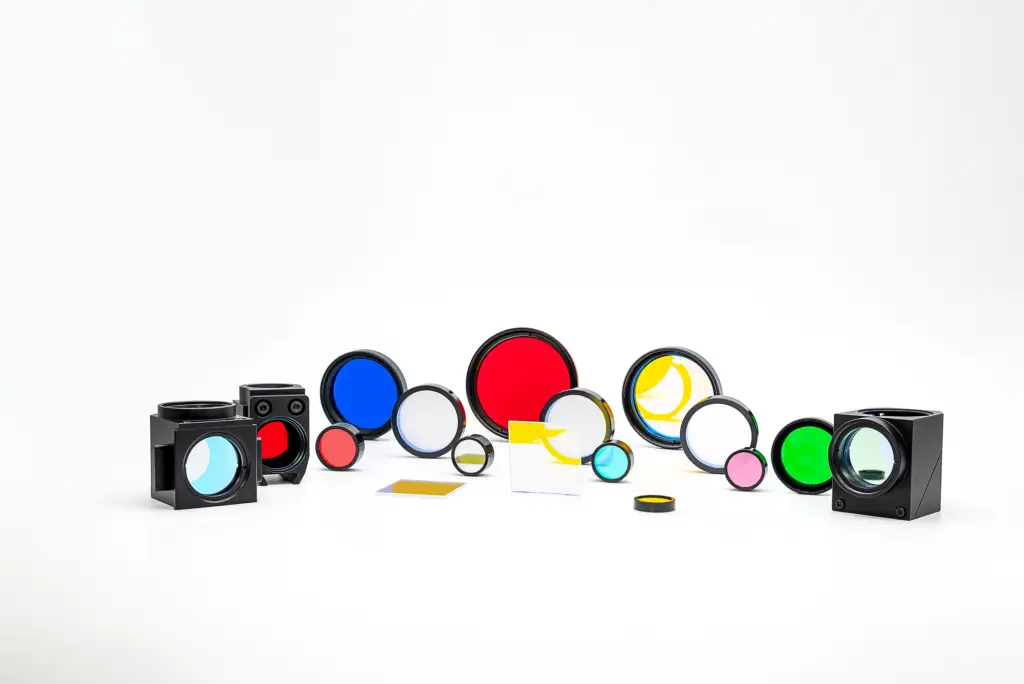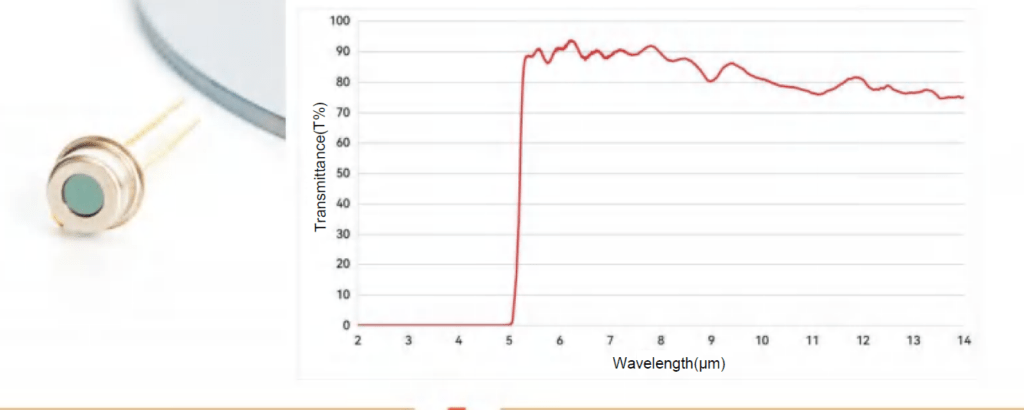1 Features
- High Cutoff Depth: The infrared temperature measurement filter ensures excellent performance by allowing precise wavelength transmission for accurate temperature readings.
- Monocrystal Silicon Substrate: The filter is designed using advanced coating technologies on monocrystal silicon, providing high stability and reliability.
- Superior Transmittance: The filter boasts high transmittance values across specific wavelengths for optimal infrared energy detection.
- Broad Spectrum: Effectively allows wavelengths in the infrared spectrum, particularly useful for temperature measurements over 780-1500nm.
- Customization Options: SOT offers the ability to customize the transmission characteristics and specifications to meet specific requirements for infrared temperature measurement applications.

2. General Description
Shape Optics Technologies Pte Ltd (SOT) provides high-performance infrared temperature measurement filters designed for use in infrared thermometers. These filters are composed of an optical system with a photodetector that detects the infrared radiation emitted by a measured object, which is then processed into a temperature value. SOT’s infrared temperature measurement filters are built on a monocrystal silicon substrate, a material known for its stability and excellent light transmission properties. The coating technology employed ensures high cutoff depth and excellent transmittance in the required infrared spectrum (780-1500nm). This filter is integral to accurately measuring the temperature of objects by allowing only the relevant infrared wavelengths to reach the sensor, enhancing measurement precision.
3. Spectrum Transmission Curves
The standard filters designed by SOT show optimal transmission for infrared wavelengths, particularly in the range of 780nm to 1500nm. Custom filters can also be manufactured for specific wavelength requirements, providing flexibility for various applications in infrared temperature measurement.

4. Coating Quality
- Adhesion Test: The coating adheres to MIL-C-675C military standards. A tape that meets LT-90 specifications is applied to the lens film layer, affixed fully, and then removed vertically. The procedure is repeated three times, resulting in no blistering or peeling.
- Temperature Test: In compliance with MIL-C-675C specifications, the filters are exposed to temperatures ranging from -62±1℃ to 71±1℃. After two hours at room temperature (16℃~32℃), adhesion is checked again, confirming no detachment.
- Abrasion Resistance Test: Following MIL-C-675C and CCC-C-440 standards, a gauze tester applies a force of 1.0 lbs (0.45 kg) to the film. This is repeated 25 times with gauze widths of 1/4 inch (6.4 mm) and 3/8 inch (9.5 mm), ensuring no damage to the surface.
- Humidity Test: The film undergoes a controlled test at 49±2℃ with 95-100% humidity for 24 hours. The film remains intact, with no peeling, scratches, or defects.
- Solvent and Cleaning Testing: Per MIL-C-675C specifications, the filter is exposed to acetone and alcohol at room temperature (16℃~32℃) for 10 minutes each. After cleaning with a cotton cloth soaked in alcohol, the surface shows no peeling or scratches.
- Salt Spray Test: After exposure to a 5% saltwater concentration at 35°C for 100 hours, the film shows no signs of degradation.
5. Standard Specifications
| Model | Transmittance (%) | Transmission Wavelength (nm) | Optical Density |
| Infrared temperature measurement filter | T ≥90% | 780-1500 | OD ≥3@350-1100 |
6. General Applications and Examples
Infrared temperature measurement filters are essential in various industries for accurate temperature sensing and measurement. Some key applications include:
- Infrared Thermometers: These filters are crucial in optical systems that measure the infrared radiation emitted by objects, allowing accurate temperature readings.
- Industrial Manufacturing: Used in industrial settings to monitor the temperature of materials during manufacturing processes, ensuring quality control and safety.
- Medical Diagnostics: In medical settings, infrared thermometers help to take non-contact temperature readings, crucial for patient diagnostics, especially in fever detection.
- Scientific Research: The filters are also valuable in scientific research, where precise temperature measurements are critical for experiments involving heat and radiation analysis.
- Environmental Monitoring: Infrared temperature measurement is used to monitor the temperature of large-scale environmental phenomena like forest fires, geothermal activity, and other natural occurrences.
7. SOT Strengths and Capabilities
SOT stands at the forefront of optical technology, offering advanced coating solutions with precision and customization capabilities. With years of expertise, SOT guarantees the highest quality and performance standards for its infrared temperature measurement filters. The company’s in-house capabilities allow for tailored solutions, making SOT a reliable partner in meeting specific customer needs, whether for precision in medical equipment, industrial processes, or research. The filters are manufactured using the most advanced technology, ensuring high stability, excellent transmittance, and superior durability under demanding conditions.
8. Standard Products
Below are the available standard models for infrared temperature measurement filters:
| Model | Transmittance (%) | Transmission Wavelength (nm) | Optical Density |
| Infrared temperature measurement filter | T ≥90% | 780-1500 | OD ≥3@350-1100 |
